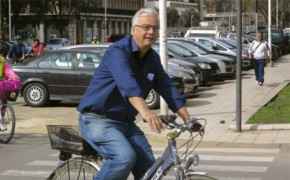Changing urban mobility: from the streets of cars to the streets of people and bikes
In many Italian and European cities the number of cars is still very high. Important changes are emerging, particularly in large European cities; But in Italy and in many parts of southern and eastern Europe the SUMP methodology has failed. Suffice it to say that there is, often, no analysis of dangerous roads for the urban cyclist, and for the weak user. Or that the railways are often not a proponent part of the train-bike, bus-bike intermodality project. Cities that want to make this important change must start from scratch: How much does it cost to a city to travel 60-70% by car? How much CO2, every day, every year? How slow is the speed of the bus in the city? What would happen if the frequency of public transport doubled? It is possible to transform commuters into urban cyclists, through cyclostations, Dutch style:? How much does it cost to achieve comfortable and safe motor-free mobility on all roads? How much could cities be enriched if cars * km were reduced even by just 20%? ? It is a completely new method, to be built together, studying the enormous cost of the city of the car, the high economic and environmental benefits of the modal shift, exchanging those Best Practices, which, in cities, have best favored change!


